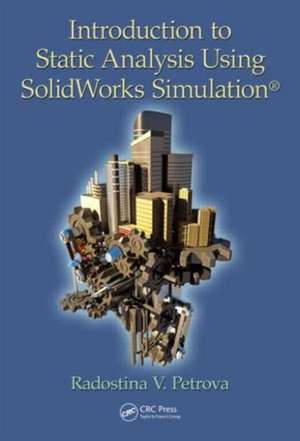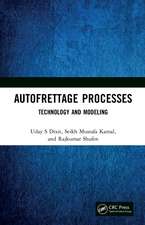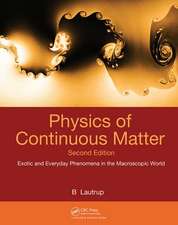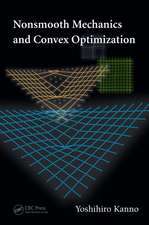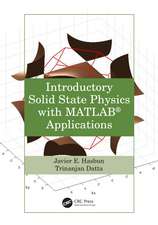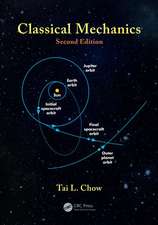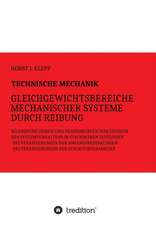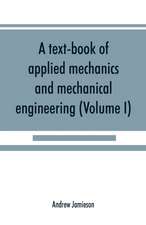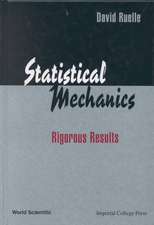Introduction to Static Analysis Using SolidWorks Simulation
Autor Radostina V. Petrovaen Limba Engleză Hardback – 9 sep 2014
Outlining a path that readers can follow to ensure a static analysis that is both accurate and sound, Introduction to Static Analysis using SolidWorks Simulation effectively applies one of the most widely used software packages for engineering design to the concepts of static analysis. This text utilizes a step-by-step approach to introduce the use of a finite element simulation within a computer-aided design (CAD) tool environment. It does not center on formulae and the theory of FEM; in fact, it contains essentially no theory on FEM other than practical guidelines. The book is self-contained and enables the reader to progress independently without an instructor. It is a valuable guide for students, educators, and practicing professionals who wish to forego commercial training programs, but need to refresh or improve their knowledge of the subject.
Classroom Tested with Figures, Examples, and Homework Problems
The book contains more than 300 illustrations and extensive explanatory notes covering the features of the SolidWorks (SW) Simulation software. The author presents commonly used examples and techniques highlighting the close interaction between CAD modelling and FE analysis. She describes the stages and program demands used during static analysis, details different cases, and explores the impact of selected options on the final result. In addition, the book includes hands-on exercises, program commands, and a summary after each chapter.
- Explores the static studies of simple bodies to more complex structures
- Considers different types of loads and how to start the loads property managers
- Studies the workflow of the run analysis and discusses how to assess the feedback provided by the study manager
- Covers the generation of graphs
- Determines how to assess the quality of the created mesh based on the final results and how to improve the accuracy of the results by changing the mesh properties
- Examines a machine unit with planar symmetrical geometry or with circular geometry exposed to symmetrical boundary conditions
- Compares 3D FEA to 2D FEA
- Discusses the impact of the adopted calculating formulation by comparing thin-plate results to thick-plate results
Preț: 1125.74 lei
Preț vechi: 1372.84 lei
-18% Nou
Puncte Express: 1689
Preț estimativ în valută:
215.40€ • 224.92$ • 177.88£
215.40€ • 224.92$ • 177.88£
Carte tipărită la comandă
Livrare economică 16-30 aprilie
Preluare comenzi: 021 569.72.76
Specificații
ISBN-13: 9781482236187
ISBN-10: 1482236184
Pagini: 353
Ilustrații: 1044 black & white illustrations, 40 black & white tables
Dimensiuni: 178 x 254 x 23 mm
Greutate: 0.93 kg
Ediția:1
Editura: CRC Press
Colecția CRC Press
ISBN-10: 1482236184
Pagini: 353
Ilustrații: 1044 black & white illustrations, 40 black & white tables
Dimensiuni: 178 x 254 x 23 mm
Greutate: 0.93 kg
Ediția:1
Editura: CRC Press
Colecția CRC Press
Public țintă
Professional Practice & DevelopmentCuprins
Introduction. Development of a Finite Element Model of a Body (Pre-Processor Stage). Development of a Finite Element Model of a Body (Processor Stage). Visualising and Systematising the Results of FEA (Post-Processor Stage). Impact of Mesh Density and Viewing Mode on Final Results. Static Analysis of Solid Body with Circular or Planar Symmetry. Static Analysis of a Shell Body. Static Analysis of a Frame Body. Static Analysis of a Complex Structure. Index.
Notă biografică
Radostina Petrova was awarded a PhD degree in applied mechanics by the Technical University of Sofia, Bulgaria. Since 2007, she has been an associate professor in dynamics, strength and reliability of machines, devices and systems at the Technical University of Sofia. Her research interests and fields of expertise include multi-body dynamic simulation of mechanical systems; nonlinear structural analysis; structural modelling and analysis using FEM; simulation-based, design optimization of mechanical systems; CAD/CAE (FEA) design of structures and mechanical systems, particularly dynamic analysis and simulations; structural engineering; wind engineering; fluid–structure interaction; exposure of slender structures (aerial ropeways, wind turbines, etc.) to random dynamic excitation; and interaction and combination of different software platforms/data for solving different structural problems.
Recenzii
"The contents seem to be quite logical and appropriate for this book: After explaining the theory, special examples with increasing complexity are worked out in detail."
—Alois Steindl, Vienna University of Technology, Austria
—Alois Steindl, Vienna University of Technology, Austria
Descriere
This book introduces the basic features of SolidWorks Simulation through practical solved examples. It provides a detailed description of all stages and program commands used during static analysis of a body. It offers a description of some common examples and techniques used to reduce the size of the model and to increase the accuracy of the calculations. It also discusses useful, yet hard-to-find information about applications of the program, such as calculations of welded or plastically deformed machine elements.
